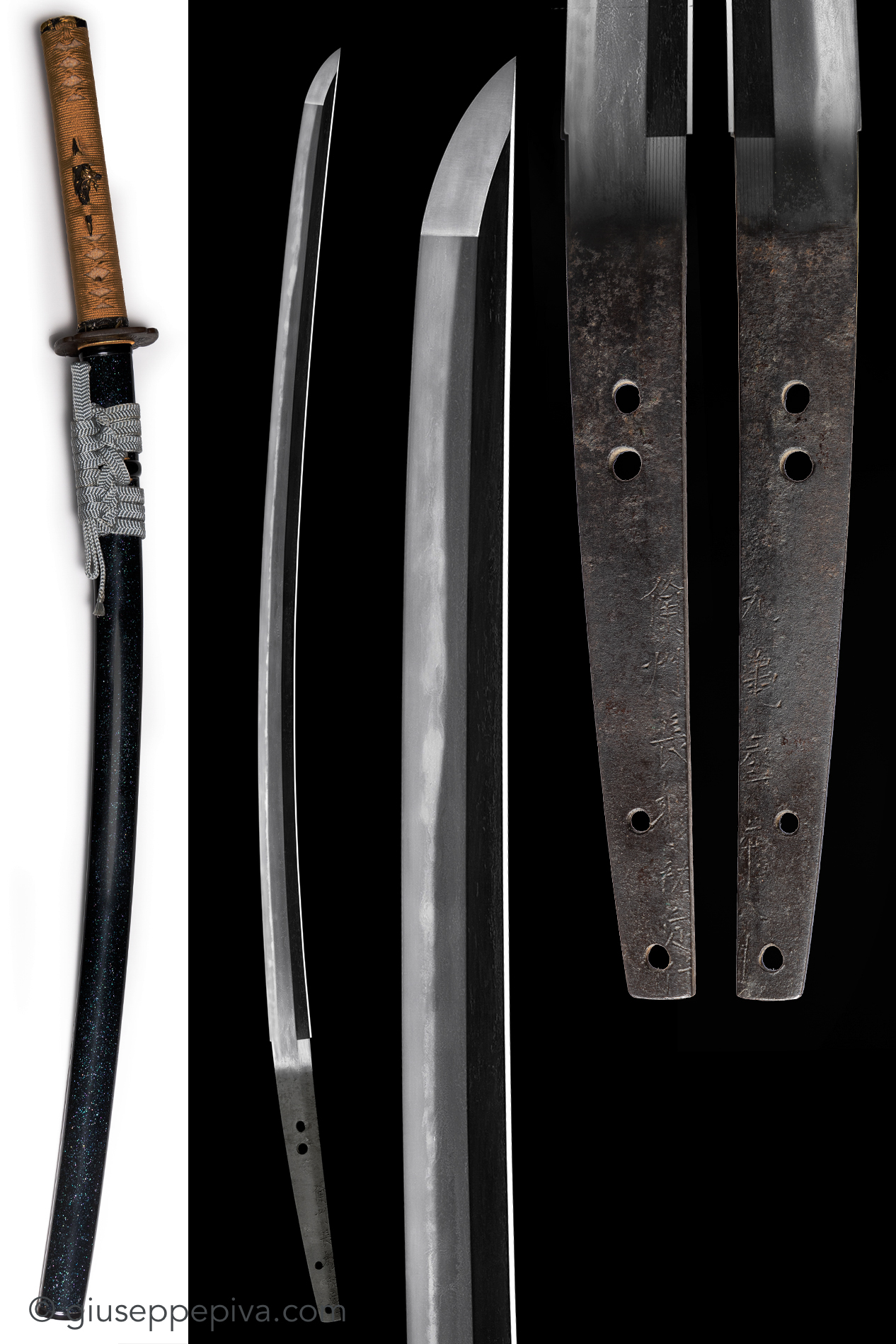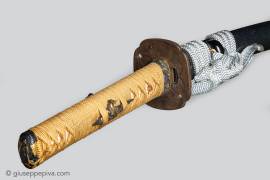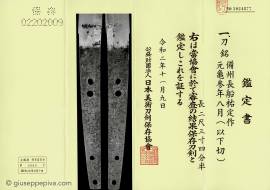Katana, Osafune Sukesada
Katana in koshirae
Signed: Bishu Osafune Sukesada Saku
Dated: Genki 3 Nen 8 Gatsuhi*
Muromachi Period, 1572
NBTHK Hozon Tōken
Nagasa [length]: 71 cm
Sori [curvature]: 2.4 cm
Motohaba [bottom width]: 3.1 cm
Sakihaba [top width]: 2.4 cm
Motokasane [bottom thickness]: 7.4 mm
Sugata [configuration]: Shinogi-zukuri, iori-mune, koshi-zori, elongated chu-kissaki
Kitae [forging pattern]: ko-mokume hada mixed with ko-itame hada Jinie and pale utsuri.
Hamon [tempering pattern]: Suguha in nie-deki with deep nioiguchi. The monouchi turns to hitatsura. Ashi, yō, sunagashi and kinsuji
Boshi [point]: Notarekomi with hakikake kaen.
Nakago [tang]: Suriage (4 cm), kirijiri; four mekugi-ana
Origami [paper]: The blade comes with a Hozon Tōken (Sword Worth of Preserving) certificate issued by the Nihon Bijutsu Token Hozon Kyokai
Koshirae [mounts]: The sword is accompanied by a good antique koshirae with aogai chirashi saya (scabbard with scattered shell sparkling) and high level fittings.
The Bizen Sukesada line of sword-smiths descended from the Osafune school and are recorded as far back as the end of the Nambokucho period. During the late Muromachi period there was a great demand for mass-produced swords (kazu-uchimono) and the Sukesada workshop had a solid reputation for producing high-quality fighting swords. At this time more than 40 sword-smiths used the Bizen Sukesada name. Sukesada’s most active period was in the Genki and Tensho eras (1570-1591).
The hamon of this katana’s upper half and bottom parts have relatively different styles, which was common at the time, but not in Sukesada blades. The presence of utsuri and the rich hamon suggest that this sword is far above the average quality of kazu-uchimono.
Inventory Nr: 1718
Info works
Copyright © 2016 - giuseppe piva - VAT: 05104180962








